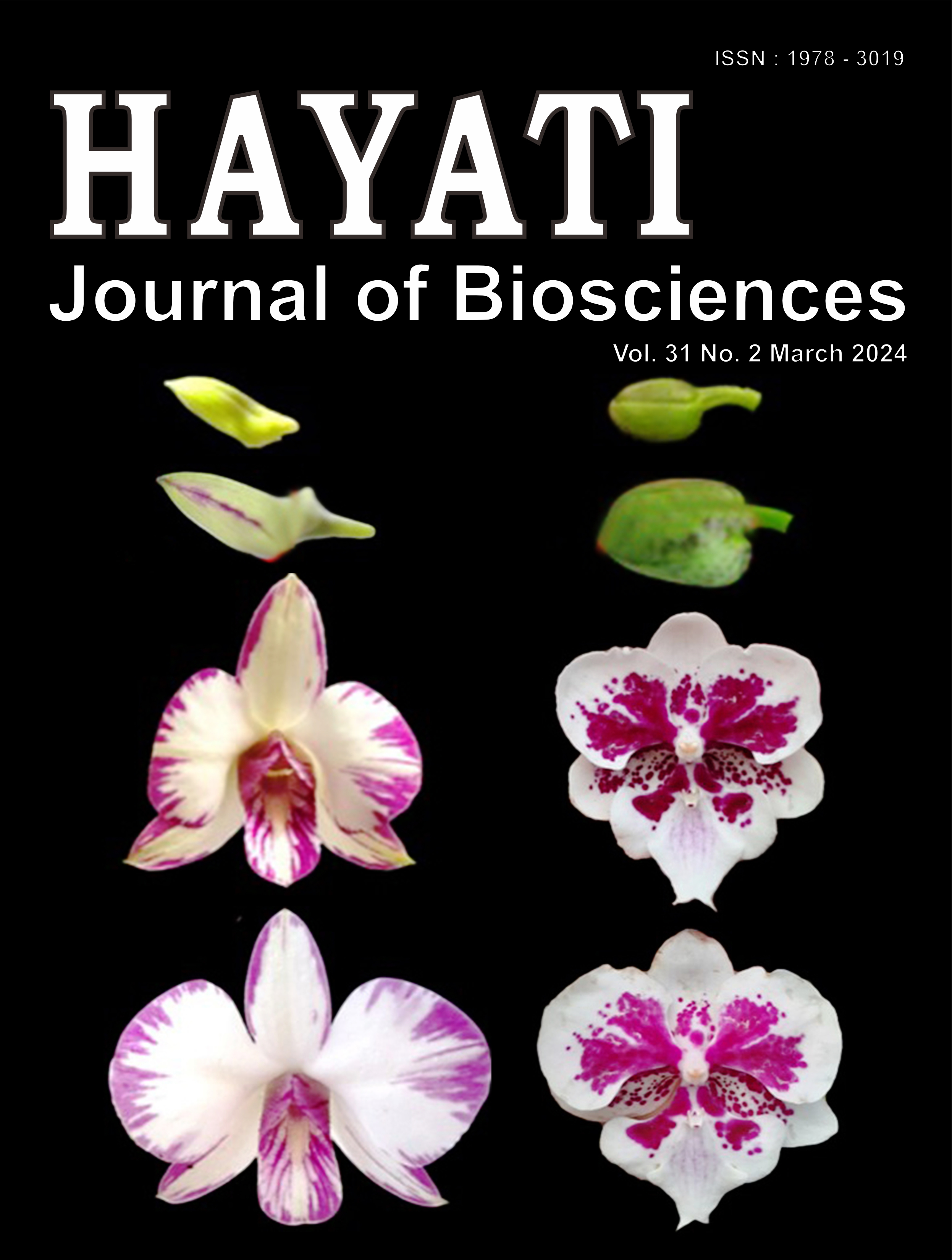Exploring the Anti-Photoaging Potential of Bacillus cereus Superoxide Dismutase in New Zealand Rabbit Skin
Abstract
Bacillus cereus is a heat-resistant bacteria that produces the enzyme superoxide dismutase (SOD). SOD is a metalloenzyme that can eliminate free radicals as the primary cause of photoaging. The point of this study is to find out how well B. cereus works as an anti-photoaging agent on the skin of rabbits’ backs. The SOD enzyme was isolated from B. cereus using the colorimetric method and characterized for its activity. It was encapsulated by the liposome method, while the activity was measured on the rabbit’s back skin exposed to ultraviolet-A (UV-A) radiation with the parameters of moisture, elasticity, and collagen levels using a skin analyzer. At the end of the treatment, a histological test for the animal skin was performed. The particle size analysis (PSA) results on the SOD in liposomes showed nanoparticles with an adsorption efficiency of 85.0% and a zeta potential of 28.0±11.7 mV. SOD encapsulated in the liposomes also indicated anti-photoaging activity potential by increasing collagen, elasticity, and moisture levels. In addition, histological tests revealed that the collagen density in the SOD liposome treatment was higher than the negatively of control and normally of control but lower than the liposome collagen.
Downloads
Copyright (c) 2023 Ana Indrayati, Nurfitriyawatie, Rizal Maarif Rukmana

This work is licensed under a Creative Commons Attribution-NonCommercial 4.0 International License.
HAYATI J Biosci is an open access journal and the article's license is CC-BY-NC. This license lets others distribute, remix, tweak, and build upon author's work, as long as they credit the original creation. Authors retain copyright and grant the journal/publisher non exclusive publishing rights with the work simultaneously licensed under a https://creativecommons.org/

























.png) IPB University
IPB University Department of Biology
Department of Biology The Indonesian Biological Society
The Indonesian Biological Society 

